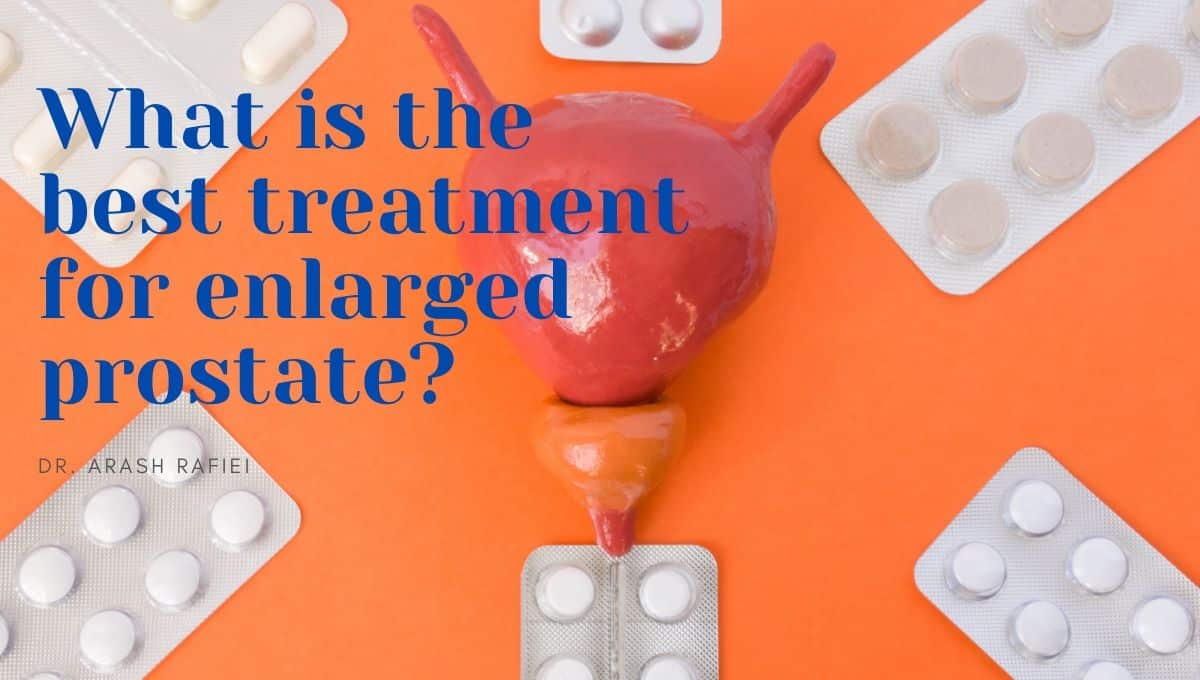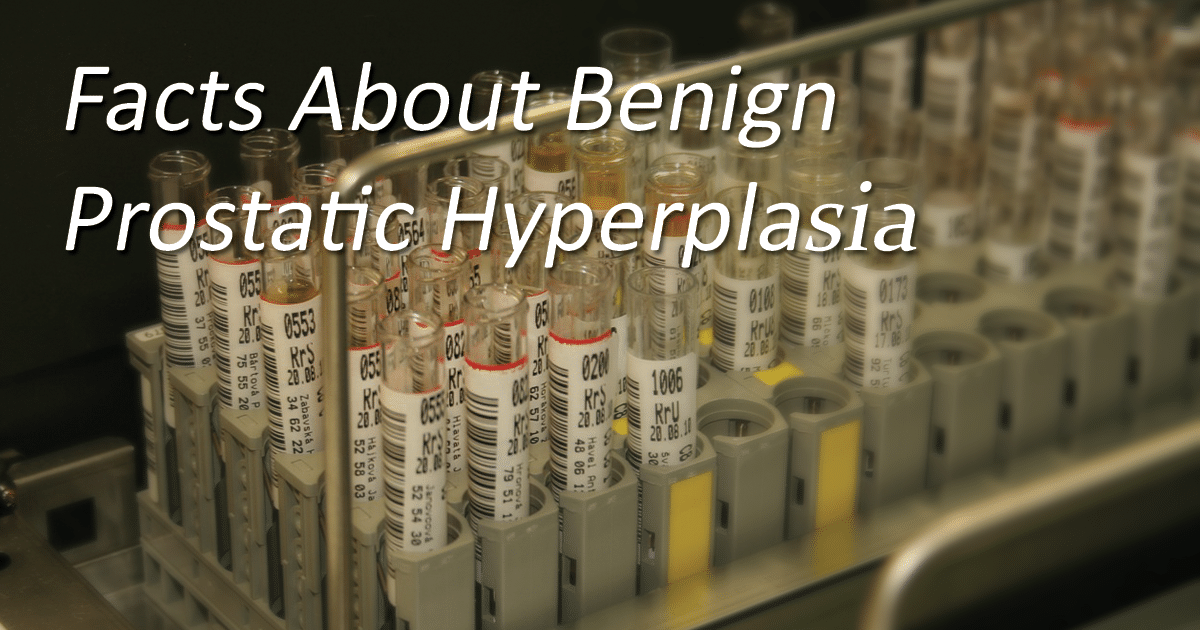Understanding Benign Prostatic Hyperplasia and its Treatment🩺🔄What Is BPH and How Can It Be Managed? At Advanced Urology Institute.
Continue readingWhat Do Your PSA Test Levels Really Mean?
Understand and be aware of what your PSA Test Levels Really Mean with Advanced Urology Institute. Don’t miss this eye-opening information.
Continue readingPractical Tips to Manage Prostate Enlargement Better
Having BPH can be very uncomfortable, AUI will show you these practical tips to manage prostate enlargement better.
Continue readingWhat are the most common types of prostate disease?
The prostate gland, simply called the prostate, is a small, walnut-sized gland found at the base of the bladder of the male reproductive system. The prostate produces an alkaline fluid that leaves the urethra during ejaculation and helps
Continue readingBPH Enlarged Prostate Symptoms & Treatment
After a Diagnosis of Prostate Cancer
My name is Amar J. Raval and I’m with Advanced Urology Institute. If you’re young and you have newly diagnosed prostate cancer, I’m definitely more aggressive in that regard offering treatment options whether it’s a radical prostatectomy or any
Continue readingTreating Benign Prostatic Hyperplasia
My name is Amar J. Raval and I’m with Advanced Urology Institute. So one of the few things I specialize in my particular practice would be BPH or enlarged prostate. Whether it’s minimally invasive surgery like Urolift where you
Continue readingHow Does UroLift Procedure for BPH Work, According to Dr. David Harris?
What Causes BPH, and How is it Diagnosed & Treated by Dr. David Harris?
What is the best treatment for enlarged prostate?
All men can experience difficulties caused by an enlarging prostate. As Board Certified Urologist Dr. Arash Rafiei says, “All men have prostates, and as we age our prostates enlarge, some more than others.” Yet each man’s situation and health is different. The symptoms of an enlarged prostate will differ greatly between individuals and the best treatment option for one may not be the best option for another.
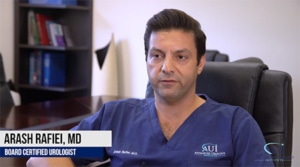 For most men, the symptoms of an enlarging prostate include the slowing of their urine stream, pushing to urinate, and having to go to the bathroom frequently. Many men also have the feeling of not fully emptying their bladder after urination. In many cases, men will find that they need to wake up multiple times in the night to go to the bathroom.
For most men, the symptoms of an enlarging prostate include the slowing of their urine stream, pushing to urinate, and having to go to the bathroom frequently. Many men also have the feeling of not fully emptying their bladder after urination. In many cases, men will find that they need to wake up multiple times in the night to go to the bathroom.
Because the symptoms of an enlarging prostate differ for everyone, the first thing a urologist will ask is if the symptoms are bothering the patient. For some men, the symptoms, especially in their early stages, are not a problem. Men may notice that they urinate a little more often. It may also take a bit longer for them to urinate when they do. They may have to get up once or twice at night when they did not have to before. A lot of men see these symptoms as inconveniences that they can adapt to and live easily with. In these cases, the urologist and their patient will just want to continue to watch the situation and may not need to take any action.
For men with more severe prostate enlargement the symptoms may be causing issues that are negatively affecting their lives. In these cases, their urologist may recommend medical therapy. Urologists will recommend medication that will help slow the growth of the prostate and relax the muscles around the bladder. This treatment will help make urination easier for men you have been experiencing difficulties. Slowing prostate growth will also give the patient more time before more invasive treatment options become necessary.
For cases where medication does not produce successful outcomes there are plenty of procedures that can help. One common procedure is a transurethral resection of the prostate. For this procedure a resectoscope in inserted through the tip of the penis and into the urethra. The urologist uses this device to trim away excess tissue on the prostate, relieving pressure on the urethra. This is an outpatient procedure and often helps relieve the patient’s urinary problems.
Another procedure that is new and becoming more common for treating enlarged prostates is Urolift. For this cutting-edge treatment, a urologist separates and lifts the prostate from the urethra using a suture, relieving pressure on the urethra and allowing better urine flow. A plus side to Urolift is that, unlike in a transurethral resection, no prostate tissue is removed allowing for quicker recovery. Most patients return home the same day as the procedure.
Having plenty of treatment options is the key to successfully managing prostate enlargement. The urologists at Advance Urology Institute get to know and understand their patients in order to find the best option for each individual. For more information, visit the Advanced Urology Institute website.
Are Enlarged Prostate and Urinary Problems Common?
Normal part of aging
Just like gray hair, BPH is a natural result of getting older. But the trouble is, it is characterized by nightly trips to the bathroom which may become too frequent and eventually disrupt daytime routine. In some cases, an enlarged prostate may make it difficult for you to sit through a plane flight or meeting without getting up. So it can be a really annoying problem.
How does BPH occur?
As men grow older, the prostate gland becomes bigger with cells multiplying gradually and creating an enlargement that exerts pressure on the urethra. Since urine flows from the bladder through the urethra in men, an enlarged prostate blocks urine flow. With increased pressure on the urethra, the bladder is compelled to contract more forcefully to push urine through the body. With time, the bladder muscles become thicker, stronger and overly sensitive, beginning to contract even when only a small amount of urine is inside and triggering the need to pass urine frequently.
Eventually, bladder muscles fail to overcome the effect of a narrowed urethra and cannot empty all the urine. That means some urine is left inside the bladder every time after urination. When the bladder is continuously not emptied completely, there is an increased risk of urinary tract infections. Incomplete emptying also can lead to serious problems over time, including incontinence, blood in urine, bladder stones and acute urinary retention (the inability to urinate). In rare cases, incomplete emptying of the bladder may cause bladder damage or even kidney damage.
Symptoms of BPH include:
- Frequent urination
- Urgent urination
- Nocturia (frequent urination at night)
- Trouble starting urination
- Weak urine stream
- Urine stream that stops and starts
- Straining to urinate
- Inability to empty bladder completely
- Returning to the bathroom to urinate a few minutes after urinating
- Dribbling at the end of urination
In rare cases, signs of BPH also may include:
- Blood in urine
- Inability to urinate
- Urinary tract infection
A sudden and complete loss of ability to urinate is a medical emergency so you should see a urologist immediately. But you also should see a doctor whenever you are experiencing urinary symptoms, even if they are not really bothersome. Such visits to the doctor will ensure that the underlying causes of your condition are identified or ruled out. Remember that undiagnosed and untreated urinary problems may cause complete obstruction of the urinary tract, bladder and kidney damage and other serious problems.
At Advanced Urology Institute, we offer several safe and effective treatments for urinary problems. For instance, if you have BPH, we may:
- Offer a long course of antibacterial medication to treat bacterial prostatitis.
- Provide medication to improve your urine flow and relieve symptoms.
- Perform surgical procedures such as:
-
-
- (a) Transurethral resection of your prostate (TURP).
-
- (b) Transurethral incision of your prostate (TUIP).
-
- (c) PVP (green light laser resection) or HoLEP (holmium laser resection) of prostate.
-
- (d) Open prostatectomy for very large prostates.
-
- (e) Urolift (transurethral insertion of clips to separate prostate lobes).
-
- (f) Aqua-ablation (removal of prostate tissue with water jets).
- (g) Rezum therapy (removal of prostate tissue with steam).
-
So you don’t have to suffer embarrassing urinary symptoms when you have BPH. At AUI, we can fix your condition and enable you to live your life with freedom and confidence. For more information on our treatment options for BPH and other urinary problems, visit the Advanced Urology Institute website.
Treatment Options for Benign Prostatic Hyperplasia
Benign prostatic hyperplasia (BPH) is the clinical term for an enlarged prostate. An enlarged prostate presses on the urethra which passes through its middle. This causes difficulties with the passing of urine, such as urine retention, weak urine stream or a frequent and sudden urge to urinate. If left untreated, it may lead to urinary tract infections and bladder complications. Benign Prostatic Hyperplasia is not cancerous and it is normal for men over age 40 to start manifesting symptoms. The condition is highly treatable.
Treatment Options for Benign Prostatic Hyperplasia
The treatment is determined by the age and general health of the patient, the size of the patient’s prostate and the severity of the symptoms. After making an evaluation based on those factors, a urologist will recommend either of the following options:
1. Oral Medication
Mild cases of benign prostate hyperplasia respond extremely well to medication. The available medication falls into two categories. There are alpha blockers that relax bladder and prostate muscles, making urination easier. The other choice may be the 5-alpha reductase inhibitors to prevent hormonal changes that cause prostate enlargement. These work to gradually reduce the size of the prostate. In some cases, a doctor may prescribe both alpha blockers and 5-alpha reductase inhibitors.
2. Minimally invasive Procedures
The variety of treatment options that fall under minimally invasive procedures include:
- Laser therapy. This is where a high powered laser beam is used to destroy the excess prostatic tissue.
- Transurethral incision. With the help of a lighted scope inserted through the urethra, the surgeon makes two incisions on the prostate to ease the passage of urine.
- Transurethral resection. This one is administered in the same way as a transurethral incision, except the surgeon removes the inner tissue of the prostate and leaves just the outer parts.
- Prostatic Urethral Lift. This is a relatively new procedure. It involves placing small implants that lift and hold the excess prostatic tissue so it no longer presses on the urethra. This procedure is widely recommended because it eliminates the irritation or discomfort that may be caused by the other procedures that involve laser therapy or cutting tissue away.
- Open prostatic surgery. This option is used only where the prostate is very large or the symptoms are extremely severe. It is not commonly done.
When symptoms of benign prostate hyperplasia begin to manifest, a patient should consult a urologist immediately so the condition can be managed well from the outset. There are many platforms for obtaining more information and help, such as the Advanced Urology Institute. At Advanced Urology Institute, a team of experts can help with diagnosis and treatment of benign prostate hyperplasia and answer any questions you may have. For more information, visit the Advanced Urology Institute website.
Facts About Benign Prostatic Hyperplasia (BPH)
Risk Factors for Benign Prostatic Hyperplasia
There is no precise understanding of the causes of BPH. However, it is accepted that the main risk factor for BPH is advanced age. The condition is so common that it is reported that about 50 percent of all men over the age of 50 are likely to have it. Of that 50 percent, however, only about 10 percent are likely to need medical intervention. The prevalence of BPH among older males may be related to an increase in the production of estrogen and the proportionate decrease in testosterone as men grow older. Estrogen promotes the growth of prostatic cells which ultimately leads to an enlarged prostate. Other risk factors include a family history of BPH, heart and circulatory diseases and obesity.
Effects of Benign Prostatic Hyperplasia
The location of the prostate is such that the urethra passes through its middle and the bladder surrounds it. An enlarged prostate presses against the urethra and forms an obstruction to the smooth flow of urine as it comes from the bladder and flows through the urethra. For this reason, BPH is known to contribute to many urinary tract problems in men. These problems are manifested in one or more of the following symptoms:
- Sudden urge to urinate;
- Frequent need to urinate;
- Blood in the urine;
- Urine retention
- Weak or interrupted urine stream; and
- Inability to pass urine.
The symptoms may be mild and can be managed by watchful waiting. However, men experiencing a complete inability to urinate, painful and frequent need to urinate, blood in the urine or pain and great discomfort in the urinary tract area are advised to seek medical attention immediately.
Since the causes of BPH are not very well understood, it is not easy to prevent but it can be managed by frequent monitoring. It is recommended that men nearing 50 should establish and maintain a relationship with a good urologist. The Advanced Urology Institute is a good place to start for people new to this subject. They offer the necessary information and a staff of trained and experienced urologists to help you.
For more information about BPH and how to diagnose and treat it, visit the “Advanced Urology Institute” website.
Options for Treating Benign Prostatic Hyperplasia
The prostate is a tiny gland situated between the bladder and the penis. But as men get older, the gland grows larger, putting pressure on the urethra and bladder and causing urinary problems. An enlarged prostate is medically called benign prostatic hyperplasia (or BPH), a condition that’s quite common in older men. In the U.S. around 50 percent of men 51-60 years old have BPH while up to 90 percent of men over age 80 are affected by the condition.
The common symptoms of an enlarged prostate are:
- Inability to delay urination.
- Urge to urinate more than 8 times a day.
- Frequently waking up at night to pass urine.
- Dribbling after urinating.
- Urinary incontinence (urinating accidentally).
- Inability to completely empty the bladder (urinary retention).
- Having intermittent or weak urine stream.
- Straining to pass urine or difficulty starting urination.
So what are the options for treating BPH?
As urologists, the first thing we do when a patient has symptoms is to rule out other possible problems. We talk with our patients to learn the nature and severity of their symptoms, conduct exams, do ultrasound and relevant tests. Once it’s confirmed that it is BPH, we begin treatment starting with the least invasive procedures. Treatment options for BPH include medication, minimally invasive procedures and surgery, although various lifestyle changes also can improve or prevent symptoms.
1. Medications
The urologist may recommend medication to help control prostatic growth and reduce symptoms. For instance, alpha blockers such as alfuzosin (Uroxatral), silodosin (Rapaflo), doxazosin (Cardura), tamsulosin (Flomax) and terazosin (Hytrin) may be used to relax prostate muscles and make it easier to urinate. They quickly increase urine flow and reduce the need to urinate frequently. Another type of medication that may be prescribed is 5-alpha-reductase inhibitors, such as finasteride (Proscar) and dutasteride (Avodart), which limit the growth of the prostate by blocking hormones that promote growth of the gland. It generally takes 3-6 months for 5-alpha reductase inhibitors to relieve symptoms.
Phosphodiesterase-5 (PDE5) inhibitors such as Sildenafil, (Viagra), Tadalfil (Cialis) and Vardenafil (Levitra) may be given to help relax urinary tract muscles and relieve BPH symptoms. However, in some cases, particularly when either a 5-alpha reductase inhibitor or an alpha blocker isn’t effective on its own, urologists may give a combination therapy. This typically involves a combination of a 5-alpha reductase inhibitor and an alpha blocker and usually results in greater symptom relief.
2. Minimally invasive procedures
When medications fail to relieve BPH symptoms, the next step in treatment usually involves minimally invasive interventions. During the procedure, a urologist inserts an instrument into the rectum or urethra to either widen the urethra or destroy excess prostate tissue. For instance, TUMT (Transurethral Microwave Thermotherapy) uses microwaves to heat and destroy excess prostate tissue. TUMT does not cure BPH but makes it easier to pass urine, cuts down urinary frequency and reduces weak flow. Another treatment, TUNA (Transurethral Needle Ablation), uses high-frequency radio waves that are delivered via twin needles to burn a specific area of the prostate. TUNA is an outpatient procedure that relieves BPH symptoms and improves urine flow.
A third minimally invasive option for BPH is water-induced thermotherapy. During the treatment, hot water delivered through a catheter and into a treatment balloon located at the center of the prostate is used to heat up a definite area of the prostate and destroy problematic tissue. Once destroyed, the excess tissue is either reabsorbed in the body or excreted through urine. Another minimally invasive treatment option is the Urolift procedure, which involves inserting small implants into the prostate to retract, hold and lift the enlarged prostate tissue, opening up the passage for urine and relieving bladder blockage. While the Urolift procedure does not involve heating, cutting or removing the excess prostate tissue, it is effective in restoring normal flow of urine and relieving symptoms, and patients usually return home the same day without a catheter.
A revolutionary minimally invasive procedure for treating BPH is the Rezum system. During the treatment, sterile water vapor is injected into the prostate to help destroy overgrown tissue. It takes roughly three months for the body’s healing mechanisms to remove dead prostate cells and shrink the prostate, opening the passage for urine to flow. The Rezum procedure improves urine flow and relieves symptoms without the adverse effect of erectile dysfunction. It’s an ideal option for men who are medically unfit for the other procedures or for those already catheterized.
For prostates that have grown larger than 100 grams, a procedure called aquablation is a good option. It uses a high velocity saline jet to remove the overgrown prostate tissue. After the treatment is planned, the procedure is robotically driven, so its duration and side effects do not depend on prostate size. It does not use heat and postoperative bleeding is prevented by inserting a large catheter and applying a bladder washout (irrigation). The results achieved through aquablation are similar to TURP, except it comes with less dysuria and minimal irritation symptoms because no heat is used.
3. Surgical procedures for treating BPH
If both medication and minimally invasive procedures fail to improve BPH symptoms sufficiently, the urologist may recommend surgery. Surgical interventions also may be necessary if complications develop or symptoms become severe. The most common type of invasive surgery for BPH is TURP (Transurethral Resection of Prostate). In fact, it’s the first surgical option for treating BPH and involves the removal of excess prostate tissue by inserting a resectoscope through the urethra and into the prostate. Or the urologist can opt for TUIP (Transurethral Incision of Prostate) that involves making incisions in the bladder’s neck and into the prostate. The operation is done to widen the urethra and boost urine flow.
In other cases, the urologist may choose to perform laser surgery. This surgical procedure involves inserting a scope into the urethra and using the scope to deliver laser to the prostate tissue. The laser treats enlarged prostate through either enucleation (cutting) or ablation (melting). Both the GreenLight Laser PVP and Holmium laser ablation of prostate (HoLAP) procedures remove the excess prostate tissue by photoselective vaporization while holmium laser enucleation of prostate (HoLEP) uses two instruments, a laser for cutting and removing excess tissue and a morcellator for slicing extra tissue into tiny fragments for removal.
In complicated cases of BPH, such as men with much enlarged prostates or those with bladder damage, urologists may opt for open surgery. During an open simple prostatectomy, the urologist makes an incision just below the navel or numerous small incisions in the abdominal area via laparoscopy. The surgeon then removes the portion of the prostate that’s blocking urine flow.
At Advanced Urology Institute, our choice of treatment usually comes down to patient preferences and their ability to cope with BPH symptoms. We often prefer the least invasive options and give medication in many cases, but other treatment options are considered for patients who aren’t responding well to drugs or who can’t tolerate the adverse effects. As an alternative to TURP and open surgery, we prefer to treat BPH that’s characterized by acute urinary retention, high post-residual volume, recurrent urinary tract infections or bladder stones through the GreenLight Laser PVP or the newer heat treatments like TUNA and microwave. For more information on treatment options for BPH, visit the “Advanced Urology Institute” site.
Most Common Forms of Prostate Diseases
Located just beneath the bladder and in front of the rectum, the prostate is a tiny gland in men that helps to make semen. It is a walnut-sized gland in young men which is wrapped around the tube carrying urine away from the bladder. The prostate grows larger with age, but when it becomes too large medical problems may arise. For men older than 50, the risk of having prostate related problems is quite high.
The most common prostate diseases are:
- Prostatitis: Inflammation of the prostate, often caused by bacteria.
- Enlarged prostate (BPH): Benign prostatic hyperplasia is a frequent problem in older men and is characterized by the frequent urge to urinate (especially at night) and dribbling after urination.
- Prostate cancer: A common cancer in men which responds well to early treatment.
Benign prostatic hyperplasia (BPH)
This is the most common prostate disease found in men older than 50. BPH occurs when the prostate gland has enlarged to the extent of squeezing the urethra and obstructing the flow of urine from the bladder. Benign prostatic enlargement only means the prostate has enlarged, but there is no cancer. It is treated using active surveillance or watchful waiting when symptoms are not severe, but medications or surgery may be needed in severe cases. Other treatments such as microwaves, radio waves and lasers also may be used.
Prostatitis
Inflammation of the prostate (prostatitis) is frequent in men older than 50. There are three forms of prostatitis: acute bacterial prostatitis, chronic bacterial prostatitis and chronic prostatitis. Acute bacterial prostatitis has sudden onset after a bacterial infection and is characterized by chills, fever and pain in addition to other prostate symptoms. A combination of antibiotics and pain medication may relieve the problem.
Chronic bacterial prostatitis is a recurrent bacterial infection of the prostate. It can be relieved by taking certain medications for a long time, but you contact your doctor immediately when symptoms occur. Chronic prostatitis (also known as chronic pelvic pain syndrome) is a common problem which causes pain in the groin, lower back and tip of the penis. It may be treated by a combination of medication, surgery and lifestyle changes.
Prostate cancer
It is the most frequent cancer diagnosed in American men, affecting almost 50 percent of men older than 70. An estimated 200,000 men are diagnosed with the cancer in the U.S. every year, but many men can live with it without problems as it causes few symptoms unless it has spread to other areas of the body. The risk of getting prostate cancer depends on age (men older than 50 are at higher risk), race (African-American men are at higher risk than Native-American), family history (you are at higher risk if your father or brother had it) and diet (more common in men who eat high-fat diets). It is highly curable when detected early. Prostate cancer is diagnosed using a digital rectal exam or prostate-specific antigen (PSA) test. Treatment options include watchful waiting, surgery, radiation therapy and hormone therapy.
Symptoms of prostate disease
You should visit your doctor if you have any of these symptoms:
- Frequent urge to urinate
- Painful or burning urination
- Need to urinate several times at night
- Painful ejaculation
- Dribbling of urine
- Blood in urine/semen
- Frequent stiffness or pain in lower back, pelvic area, hips, upper thighs or rectal area
At Advanced Urology Institute, we have experienced physicians and state-of-the-art facilities for diagnosis and treatment of prostate diseases. If you have any of the symptoms above, visit us for help. For more information, visit the site Advanced Urology Institute.



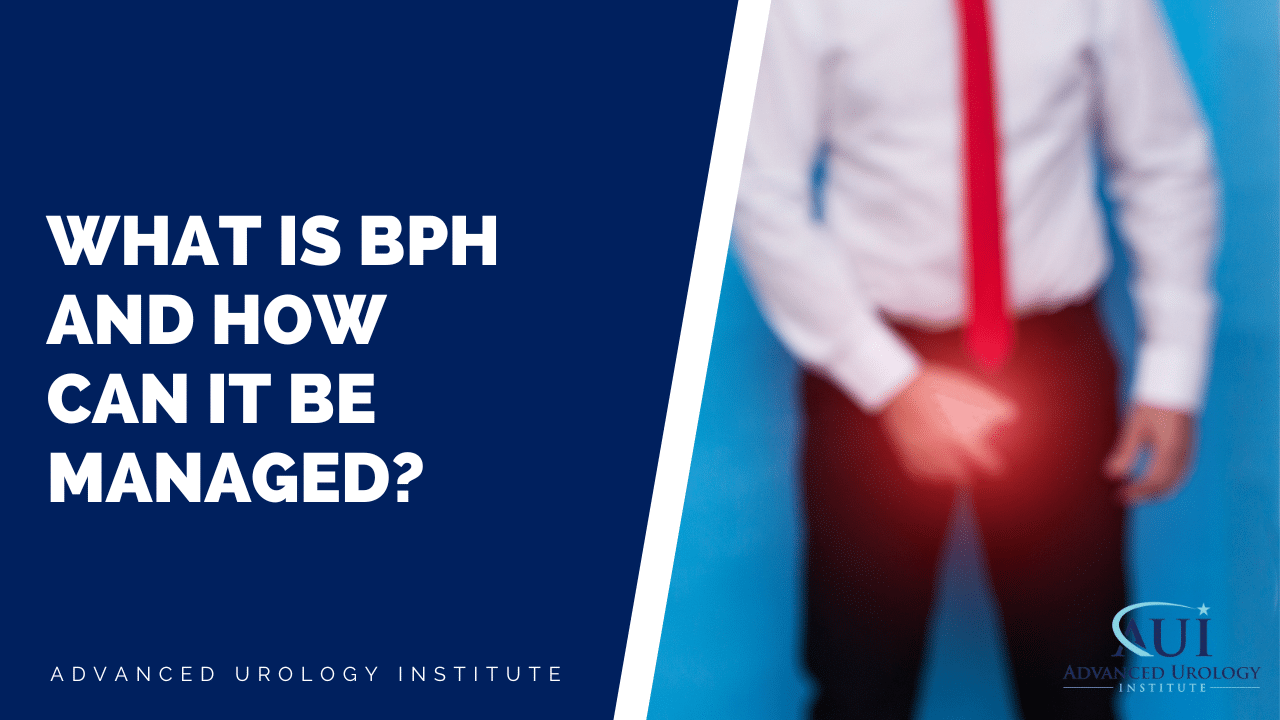






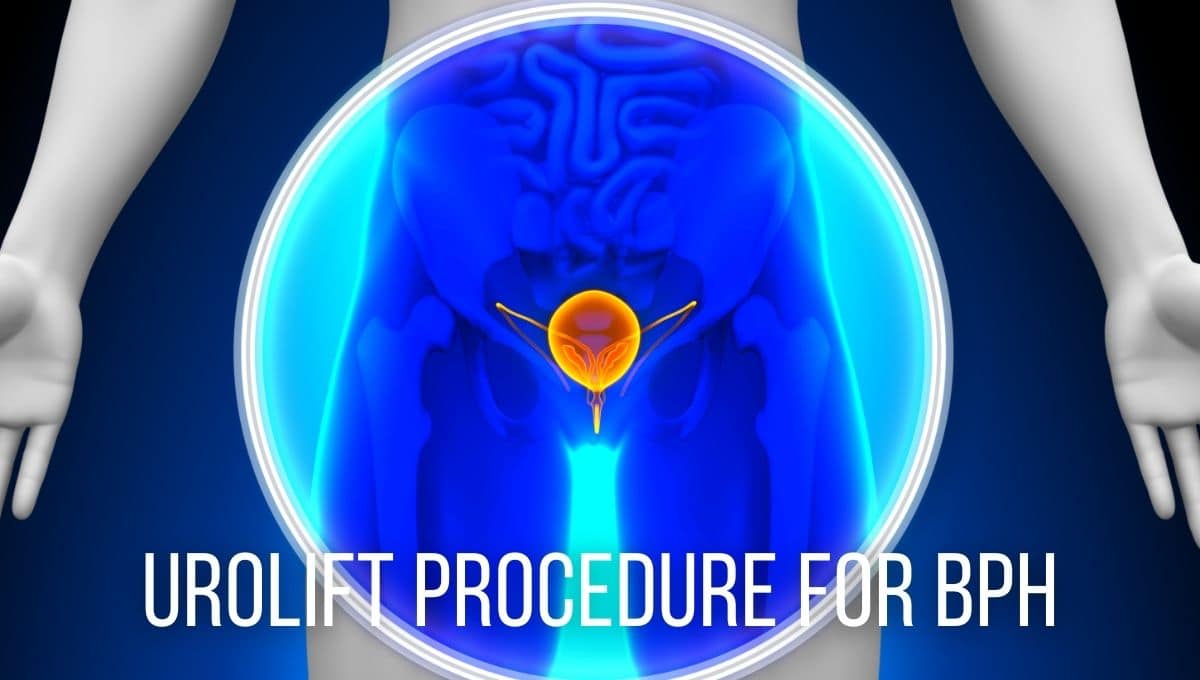
 Fortunately for men who suffer from BPH, medical progress is on their side. According to
Fortunately for men who suffer from BPH, medical progress is on their side. According to 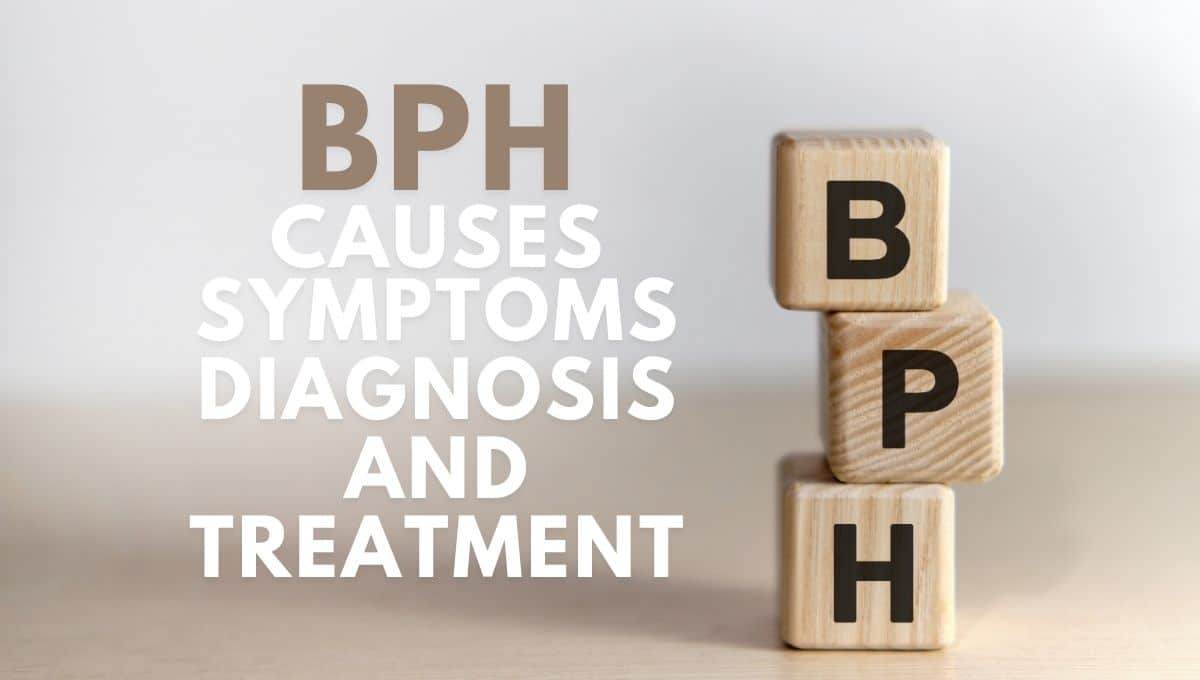
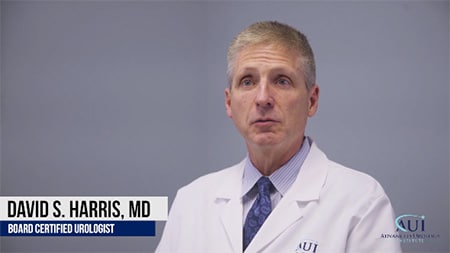 Once an appointment is made with the urologist, doctor and patient can begin discussing symptoms and the diagnostic process. If the patient’s complaints are consistent with BPH, the urologist will proceed with a prostate exam. There are also other simple, non-invasive tests that can be completed at the urologist’s office that will indicate the patient’s urine flow and ability to empty his bladder. More sophisticated testing is available if additional data on the patient’s BPH issue is needed. For example, fiber optic scope evaluations give the urologist the most detailed picture of the patient’s BPH, which can then be used to devise the best treatment plan.
Once an appointment is made with the urologist, doctor and patient can begin discussing symptoms and the diagnostic process. If the patient’s complaints are consistent with BPH, the urologist will proceed with a prostate exam. There are also other simple, non-invasive tests that can be completed at the urologist’s office that will indicate the patient’s urine flow and ability to empty his bladder. More sophisticated testing is available if additional data on the patient’s BPH issue is needed. For example, fiber optic scope evaluations give the urologist the most detailed picture of the patient’s BPH, which can then be used to devise the best treatment plan.